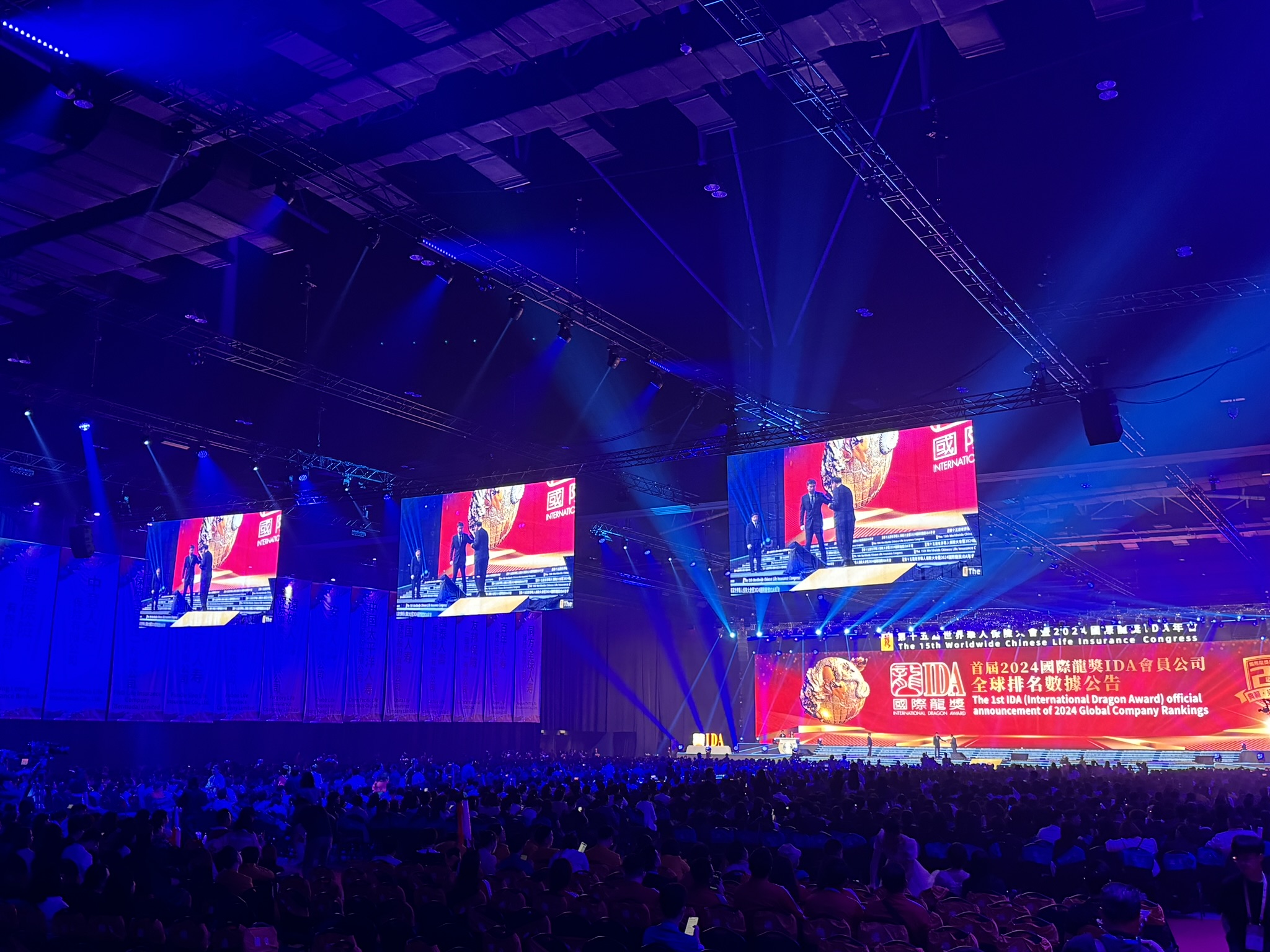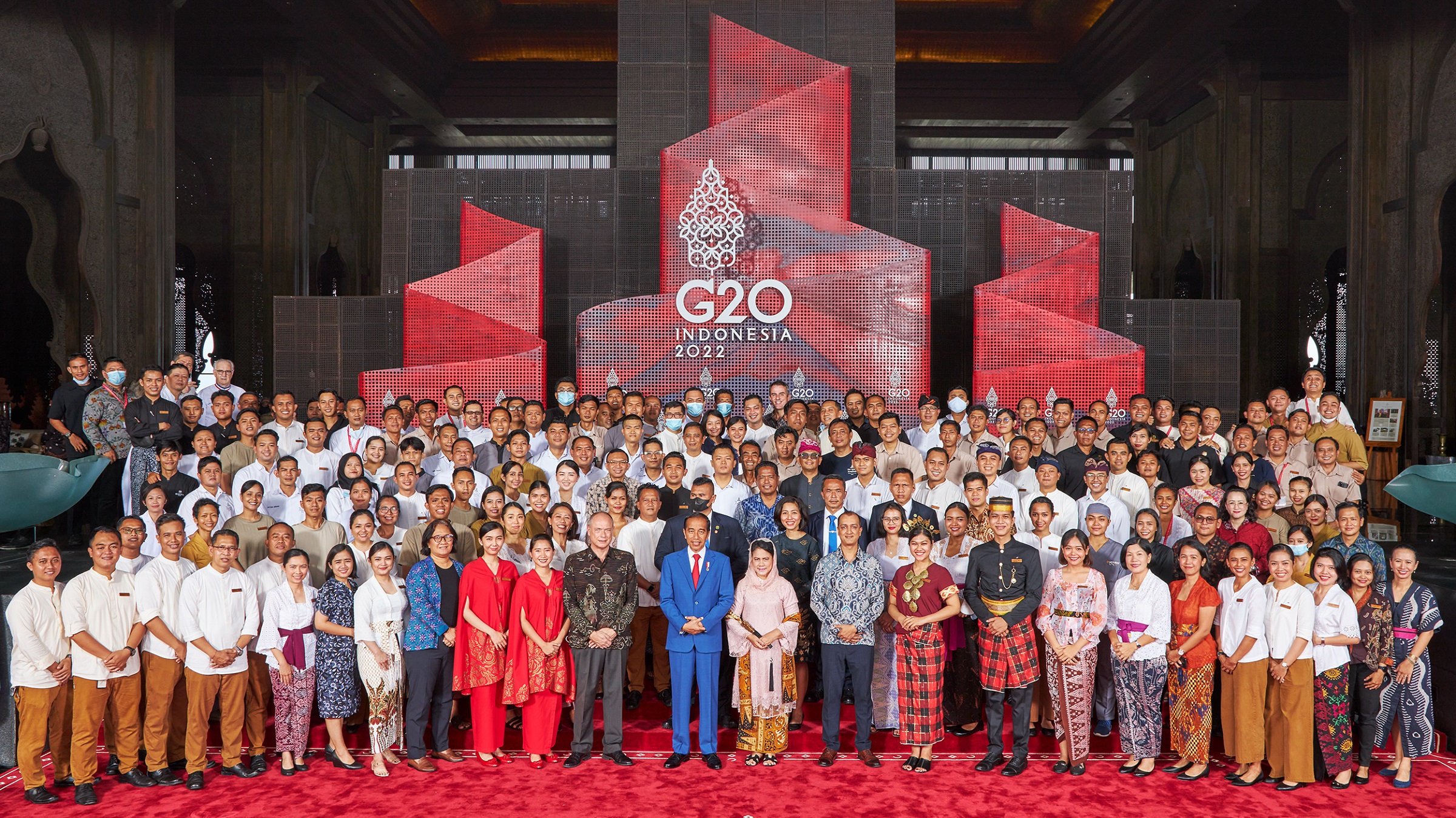Elbert Einstein once said: “It has become appallingly obvious that our technology has exceeded our humanity.”
The greatest mind of the 20th century and the awardee of the 1921 Nobel Prize in Physics saw how progress could be a mixed blessing. He uttered this famous quote when mankind was on the cusp of a new era of great discoveries.
While he did not witness the quantum leaps in technology over the past half century, he nevertheless had foreseen the potentially destructive impact of inventions on normal human interaction.
As technology allows people to communicate remotely through conference phone calls and interactive web sessions, dire warnings have been raised about the demise of traditional face-to-face meetings. But it is premature to sound the death knell for the meetings and business events industry.

Justifying investment
“Technology is not the end, it is a means to an end,” says US-based meetings technology consultant Corbin Ball, CSP, CMP of Corbin Ball Associates. “Used well, it will greatly improve efficiency and customer (attendee/exhibitor) service. Used poorly and it can be worse than using no technology at all.”
Corbin Ball Associates provides expert advice in the use of technology in business events. Its client portfolio spans a wide range of industries and includes companies such as Goldman Sachs, Sun Life Financial, Dr Pepper and Seven Up Inc, Proctor and Gamble, Microsoft, Hewlett-Packard, Suntec Singapore, Sydney Convention and Visitors Bureau, IHG and Marriott Hotel Corporation.
Ball notes that the majority of meetings technology is now web-based and is increasingly mobile. Most event organisers – a group known to be highly risk-averse – have embraced a range of basic applications, while steadfastly keeping their distance from newer and funkier innovations.
Currently, the top 10 commonly used software in meetings technology are: online registration, online housing and travel, event website and other e-marketing, exhibition sales and floor plan management, online databases for site selection.
Abstract and speaker management, lead retrieval/matchmaking technologies, virtual meetings technology, and audience polling.
When can organisers say that it is cost-effective to spend on technology in any given situation? Ball says it depends on the technology being used.
“Generally, the larger the event, the more it needs technology. But even with very small events, there are many technologies that can be useful. Online registration, for example, can be 90 percent more efficient than the old, paper way of managing data. This applies to almost any group of about 25 to 50 people or more.”
He adds: “Justifying the investment is a simple ROI (return on investment) calculation which is based on the cost of technology divided by the number of people. Is the price per person worth it in terms of reduced cost and increases in efficiency, customer satisfaction and attendance?”
Experts take the lead
To be frank, no technology can replace a face-to-face meeting and many in the business events industry are beginning to realise this.
At its best, IT systems and gadgets are there to simplify the event planner’s increasingly complex work process. And, with the proliferation of mobile communicators such as the iPhone and BlackBerry, even attendees expect some kind of high-tech interaction at certain points before, during and after the event. Indeed, the use of basic applications such as email attendance confirmation has become standard in the meetings business.
Events professionals are now taking their technology to the next level.

Shanghai-based HLD Events last year rolled out its Pocket PC-based Mobile Surveys software as a value-added service. The handheld research device is designed to capture valuable information from visitors, buyers and customers in a tradeshow. Questionnaires are available in multiple languages, including English and Chinese.
“Mobile Surveys allow companies to survey their prospects onsite, use the information quickly and in real time, keep track of their contacts and measure their ROI,” says HLD Events director Stefano Ritella.
At last year’s SIAL trade show in Paris, the Spanish Economic and Commercial Office based in Shanghai tapped HLD Events to handle the activities happening at the Spanish Pavilion. Alongside its event management service, HLD deployed the handheld research device at the three-day event.
“We had access to over 500 professionals and experts in the F&B industry. We were able to collect important feedback and produce an insightful report to be used in future events and as support for [our client’s] strategic decision making.”
Ritella adds: “It is geared to trade shows, but it can immediately be adapted to meetings and conferences as we can also install it on laptops, totems and touch screens. It takes few hours to create, test and launch a new survey.”
Venues wire up
Many meetings technologies are hard wired into the infrastructure. It’s therefore hardly surprising that new-build hotels, convention centres and stand-alone venues are fitting their facilities with advanced lighting, audiovisual and internet systems.
In Australia – which has the most complete business events ecosystem in Asia-Pacific, venue operators of different stripes have risen to the challenge of building “intelligent” facilities to meet the technology needs of both organisers and attendees.
The Melbourne Convention Centre has an AMX control system installed in all meeting rooms. With the use of a wireless touchscreen interface, organisers and event participants can take control of the technology within the room such as lighting, projection and volume levels.
A standout is the intelligent lectern in every room, which puts the speaker completely in charge – touch a button to dim the lights, start a presentation or link to another room.
The lectern also includes an electronic whiteboard feature. Easy to use and intuitive, it is ideal for interactive workshops and seminars that involve note-taking, training and collating information.
The electronic whiteboard feature gives the free-format flexibility of paper flipcharts with the ability to electronically save information for evaluation and distribution.
Meanwhile, other optional technologies available at the MCC include digital media distribution, webcasting and video streaming, event recording and many more.
Technology adoption today is not only limited to installing IT applications. It covers nearly all aspects of a venue where improvements can be made.
Doltone House, a firm that owns several waterfront venues – two of them are located in prime addresses on Sydney Harbour, has shown innovative use of technology in its push to offer a green venue.
Its newly opened facility at Darling Island Wharf has been rated the first six-green star building in New South Wales. The eco-friendly approach did not stop at the construction of the event centre, it now extends to operation and maintenance of the facility. And Doltone House uses technology to remain true to its green vision.
The Darling Island Wharf site is custom-fitted with carbon-dioxide sensors and variable speed fans to reduce the toxin emission and air pollution, increasing the supply of fresh air by up to 50 percent. Its water-cool system captures heat rejected from the Sydney Harbour and transforms it into usable energy. The venue also uses a Blackwater Reuse system for parkland irrigation and a tri-generation energy system – where heat, power, and chilled water for air-conditioning are produced in a single unit.
“While ‘greening’ a site to the extent that we have added an extra 15 percent to construction and fit-out cost, it demonstrates the level of our commitment to sustainability on Sydney’s waterfront,” says Doltone House director Anna Cesarano.
Meetings technology is global
Corbin Ball observes that there is no continent that can claim leadership in meetings technology. With most of the innovations happening online, the borderless nature of the internet enables applications to be accessed anywhere.
“It comes down to individuals who get it and they can be anywhere in this global economy,” Ball points out, adding “there are people from everywhere who understand the impact of technology on meetings. They will ultimately be more competitive than those who don’t”.
TAKE NOTE
Meetings participants need not worry about missing some key points of the conversation with the advent of sophisticated voice writing technology and speech recognition, writes Gigi Onag
Melbourne-based Adrian Kelly earns his keep by repeating what other people say. The managing director of Transcripts Plus belongs to a small elite group of professionals called “voice writers”, who produce complete, verbatim transcripts – in real time – of meetings and conference sessions.
“Voice writing is a cutting-edge technique where a skilled reporter takes proceedings of meetings by voice. Advanced speech recognition software translates the words into text on the computer,” says Kelly, who set up Transcript Plus
in 1994.
The company, which claims to be the only one of its kind in the Southern Hemisphere, provides precise transcripts of any speech seconds after the words are spoken. It can document court hearings and arbitrations, AGMs, board meetings, focus groups, workshops, lectures and more. Its customer base includes Telstra, the Victoria Racing Club and the Victorian County Court.
“Voice reporters have obtained a very high level of expertise and can accurately shadow the words of speakers in excess of 200 words per minute,” he adds, pointing out that the CAT (computer-aided transcription) software is so exact that “we can identify over 50 different speakers in a room”.
Indeed, any spoken word, anywhere, is accurately transcribed within seconds, even from remote locations. Additional benefits include the ability to search content and play back recordings at any time during the discussion.
At the end of the event, Transcripts Plus can provide a transcript, a digital audio and video recording, plus copies of charts and speaker notes, all synchronised on a user-friendly DVD.
The company can also provide professional, accurate minutes. Key points can be boxed, motions clearly outlined, and the minutes provided in three different styles. This service saves time and money as it eliminates the need for typing pools and third party transcript production from audio recordings.
“The actual use of speech recognition by a trained voice writer for meetings and conferences has been been gaining momentum over the past 10 years,” says Kelly, adding that it is widely used in the US and parts of Europe “for meetings where hearing-impaired people
are present”.
10 meetings technology trends to watch for 2010
Innovation is bubbling with new options. Here are some of the major technology trends to watch for this coming year
10. Mobile phones are morphing into advanced mobile meetings technology platforms
This is opening up a range of mobile applications such as:
• Mobile conference programmes (www.a2zinc.net and www.core-apps.com)
• Text message receipt of conference agenda, speaker course notes and just about any other paper distributed at events (www.snipp.com)
• A mobile phone concierge lets hotel guests order food, drink, transportation, entertainment, wake-up calls, and more (www.runtriz.com)
• Electronic ticket, micro payments and lead exchange
9. Social networking technology finds numerous meeting applications
Many associations and specific meetings have their own Facebook pages. LinkedIn brings groups of like interest together around events. Conference managers and attendees are sharing their event photos on Flickr. Meetings specific versions are also developing (www.i-meet.com, www.crowdvine.com, www.zerista.com, www.intronetworks.com, www.pathable.com) often with integration with the Facebook and others.
8. Social review sites are moving to meetings
The model provided by TripAdvisor, where guest hotel reviews help guide purchasing decisions is moving to meetings. Several sites have emerged providing peer reviews of meeting facilities by and for meeting planners. Included are MeetingUniverse (www.meetinguniverse.com), Meetings Intelligence Exchange (www.meetingsintel.com), MeetingsCollaborative (http://meetingscollaborative.com) and Elite Meetings (www.elitemeetings.com).
7. Micro-Blogging (Twitter) is proving particularly well suited for events
Attendees are using Twitter to connect at meetings, to share event epiphanies. Tweet-Ups (face-to-face meetings of groups of Twitter users) are popping up at events. Conference managers and hotels are monitoring the tweets for problems or opportunities to exceed expectations.
6. Strategic meetings management programme (SMMP) options are increasing
SMMP allows companies to track meeting spend with a range of meeting approval, sourcing, event calendaring, and spend analysis tools. This can save a large corporation millions of dollars annually in meeting spend. There are now more options for companies to choose, including Cvent (www.cvent.com) and SignUp4 (www.signup4.com).
5. More video to promote and improve the meeting experience
Speakers, meeting planners and attendees are loading event videos on YouTube and other video-sharing sites. Remote speakers are presenting to their audiences via Skype. Interviews of speakers and meetings attendees and presentations themselves are available via web video. HD screens are becoming common in guest and meeting rooms. Flat panel, interactive displays are replacing standard signage.
4. Audience response technology gets cheaper and more diversified
Audience-polling systems are a great way of finding out what the audience is thinking and engage them as well. As the technology advances, the units are getting smaller, cheaper, and easier to use, making it possible to rent them without hiring specialised staff to set-up and manage. Companies are providing these units for as low as US$3 per unit. Additionally, text message polling (American Idol-like phone voting) and mobile web polling using phones are coming into use, including www.polleverywhere.com,www.quickmobile.com, www.zukuweb.com, and www.validar.com at even lower costs.
3. Low cost, two-way, mobile lead retrieval options for meetings and tradeshows attendees are emerging.
A number of mobile options are opening up electronic lead retrieval to everyone at the event. These options include:
• Quick-response (QR) codes: 2D bar codes designed to be displayed and read by current mobile phones. 250 characters fit into a postage-stamp sized image. QR codes have been approved by the TSA for electronic boarding passes.
• Bump (www.bumptechnologies.com) provides contact information exchange between iPhones simply by “fist bumping” with the iPhones in hand.
2. Telepresence is finally gaining a foothold at hotels for virtual meetings
Ideal for small groups of 20 or less, telepresence is video conferencing on steroids: life-size, high-resolution, eye-to-eye with excellent audio designed to simulate face-to-face interactions. Telepresence rooms are opening to the public for rent. Marriott and Starwood Hotels have announced they will be installing Cisco telepresence technology in many of their hotels
1. Despite the increased use of virtual meetings technology, face-to-face meetings and tradeshows remain viable
Meetings and tradeshows can still provide the best value for your education, networking, and sales budgets. Events offer unparalleled opportunities to bring buyers and seller together to brainstorm and to network. The events, tradeshow and hospitality industries are relationship-based, and events and tradeshow are some of the best ways to build these relationships.


